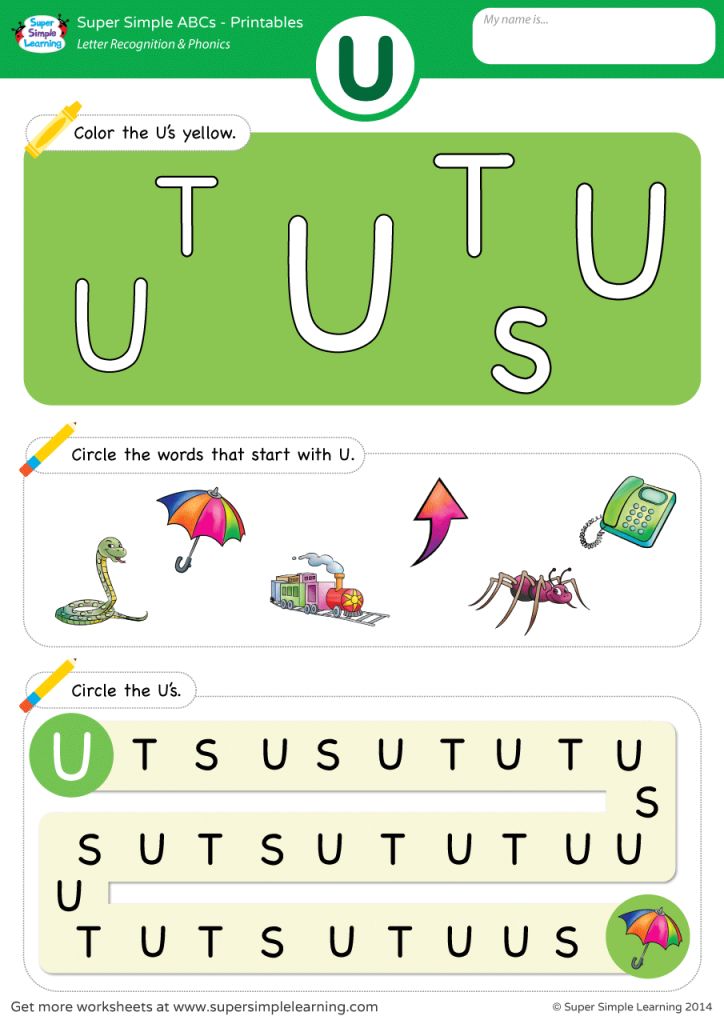Teaching colors to kindergarteners
10 Activities for Teaching Colors in Kindergarten
Curriculum | Featured
Teaching colors in kindergarten is an important and fun skill to teach. These kindergarten color activities will make learning hands-on and engaging all year long. Plus, your students will work on math, literacy, fine motor, and problem-solving skills along the way.
Colors and Color Word Activities for Kindergarten
Teaching colors and color words in kindergarten helps students to visually discriminate colors and begin working with colors in different subjects, such as math, literacy, and art.
From sorting, graphing, reading color words in sentences, and identifying colors in art, teaching colors is an important life skill for young learners.
#1. I Spy!
I Spy! is a kid-favorite when it comes to kindergarten color activities. This game can easily be incorporated anytime of day, whether it’s a morning warm-up, carpet game, or quick time-filler activity.
To play, one person is the “spy.” They look around the room and say “I spy something (green/blue/red).” Students then take turns raising their hand and guessing what it is. The first student that guesses correctly is the next “spy.”
Using color games with students is an effective way to engage them and practice skills in a fun way.
#2. Scavenger Hunt
Another way to get your students active and engaged in the learning is to do a color scavenger hunt. To play, draw different colored circles in the middle of various notecards. You can use as many colors as you’d like to work on.
The students will draw a notecard, identify the color, and go around the classroom to find something in that color. When they find something in the matching color, they stop and raise their hand in place.
Once everyone has found a match, go around the room calling on students one at a time and have them share their color and what the object is. Have them return to their seats, pass their cards to the left, and repeat the scavenger hunt again with their new colors.
Have them return to their seats, pass their cards to the left, and repeat the scavenger hunt again with their new colors.
Another option is to do this activity in small groups. Give students 2-4 notecards and have them go around the room and collect objects. Then, they return to the small group table and match the object to the correct color notecard before switching cards.
#3. Color Patterns
Whenever you can combine your kindergarten color activities with math, that’s a teacher win! Practice identifying colors and making patterns with different colored counting bears, color links, or plastic cubes.
You can call out a pattern and have students model it with their manipulatives. You can also use pattern cards to help students model various patterns, such as AB, AAB, ABB, ABC, and AABB patterns.
#4. Color Sorts
A simple yet effective kindergarten color activity is to have students practice sorting by color and saying the colors out loud.
You can give students a handful of manipulatives, such as pattern blocks, colored cereal, plastic cubes, mini erasers, color links, etc.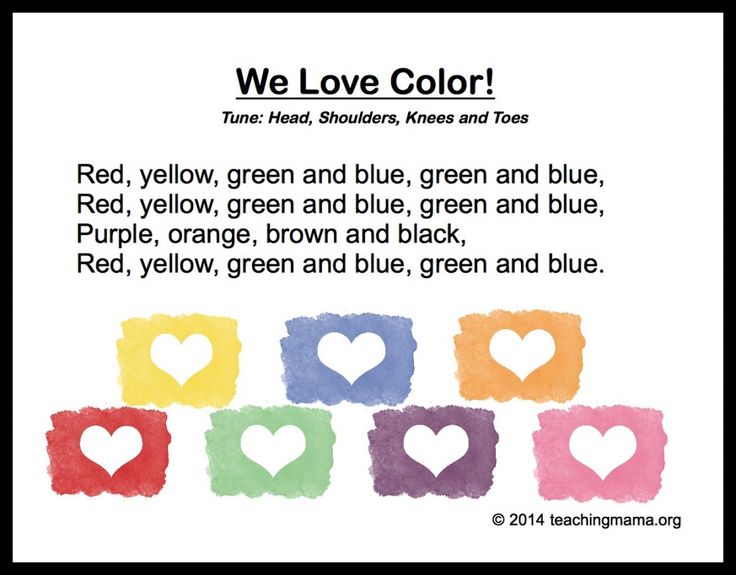 Have them sort the manipulatives by color and identify the color by saying it out loud.
Have them sort the manipulatives by color and identify the color by saying it out loud.
To take it a step further, ask students to count how many are in each category to practice math skills.
Another variation of this activity would be to have different colored cups or containers and have students sort their pile into the proper cup or container.
If you don’t have different colored cups or containers, you can write the color word in a colorful marker on a sticky note and stick it to the outside of any cup or container you have on hand. This would help students learn their color words as well.
#5. Egg Carton Fill
This color activity uses both color knowledge and fine motor skills. Prepare an egg carton by coloring a circle on the bottom of each space in an egg carton. You could also use a colored circle sticker instead and stick it in the bottom of the spaces.
Have students use jumbo tweezers to sort colored pom poms into the correct spaces in the egg carton, matching the colors of the pom poms to the circles. This would be a great small group or fine motor center activity.
This would be a great small group or fine motor center activity.
#6. Play Dough Color Count
Play dough is a great manipulative to keep on hand when teaching colors. Students can practice identifying colors and counting at the same time.
To prepare, write different color words in the corresponding color with marker on notecards. Students will draw a color card to determine which play dough color they’ll use. Then, they’ll roll a dot cube and count the dots. Finally, they’ll form that many play dough balls in the correct color, counting as they go.
Students can do this activity at a small group table or desk or with a color matching mat.
#7. Color Call Out
The next kindergarten color activity is another super easy, no prep game that can be played at any time.
To play, stand in circle as a whole group. One person calls out a color. Starting with the person to the left of them, each student says a real world object that is that color. After every student has said an object, the whole class spells the color word together.
Students take turns being the “caller” and calling out the next color.
#8. Roll and Match Colors
Color Roll and Cover is a fun game for students that makes practicing colors super fun.
You can use a color cube or a dry-erase cube to write color words or draw colored circles on. Students will roll the cube and cover a space on their roll and cover mat with a matching colored manipulative. The first student to cover the most spaces wins.
This activity is one of the activities found in the Let’s Learn Colors Mini Unit.
#9. Bingo Dabber Activities
Bingo dabbers are perfect for several kindergarten color activities. You can give students a white piece of paper and have them write color words using the matching color of bingo dabber. This also gives students a little fine motor practice while forming the words.
Another option is to have students dab freely on a white piece of paper and have them say the color word each time they dab.
To practice spelling the color word, they could even say a letter each time they dab to spell the color word. Once the word is complete, they switch colors.
Once the word is complete, they switch colors.
#10. Color Boom Cards
Using digital kindergarten color activities is another way to practice colors while engaging your students. Students can practice color recognition with real world objects or even color discrimination with Boom Cards.
They’ll hear the color words in the audio directions, giving them even more exposure to colors and color words.
I hope these 10 kindergarten color activities have given you some fresh ideas that you can implement with your students.
Looking for more colors and color words activities for kindergarten? Check out my Let’s Learn Colors Bundle, complete with color activities, centers, games, and no prep pages.
Post Tags: #color words#colors
Similar Posts
Activities for Teaching Colors - The OT Toolbox
There are so many ways to include multisensory play in teaching colors to children. Here, you’ll find hands-on, creative ways to teach colors of the rainbow using play that helps kids develop skills, move, and grow. Use these color activities in preschool or to teach toddlers colors. It’s a fun way to develop visual discrimination skills in young children.
Use these color activities in preschool or to teach toddlers colors. It’s a fun way to develop visual discrimination skills in young children.
Teaching colors and coloring goes hand-in-hand. Our resource on the best crayons for toddlers is a huge help, especially when deciding on the type of crayon to use at the age of teaching colors to toddlers and young children.
I’m including color activities for kindergarten and school-aged children, as well, because this color themes can be used in therapy activities or to help kids develop handwriting, or visual motor skills in the older grades. There is a lot of fun, hands-on activities listed here that help children learn colors and explore through play!
Teaching Colors to Toddlers
Toddler play and development is all about the hands-on exploration of the world. We have a lot of toddler activities designed to develop motor skills and learning here on the website that you’ll want to check out.
To teach colors to toddlers, it’s all about making things fun. These toddler activities will get you started with hands-on development activities.
These toddler activities will get you started with hands-on development activities.
So many color activities in the toddler years involve sorting colors, identifying colors, and pointing out colors. All of these activities lay the building blocks for visual discrimination that kids will use in reading and writing down the road.
Try these activities for teaching colors to toddlers:
Toddler Color Sorting with Toys– This activity uses toys and items that are found around the home, making the color identification part of every day life. You can use items that the child uses and sees every day.
Teach Color Sorting Activity– This simple color sorting activity is great for families that have a preschooler and a toddler. The preschooler can cut foam sheets and work on scissor skills and then both the preschooler and toddler can sort the paper scraps by color. This is a nice activity that allows siblings to work together to learn concepts and grow skills together.
Color Sort Busy Bag– Toddlers love to drop items into containers, and put things into buckets, bins, and bags…and then take them back out again. It’s all part of the learning process! This color sorting busy bag gives toddlers colored craft sticks or dyed lollipop sticks and has them sort by color. It’s a great activity for developing fine motor skills and coordination, too.
It’s all part of the learning process! This color sorting busy bag gives toddlers colored craft sticks or dyed lollipop sticks and has them sort by color. It’s a great activity for developing fine motor skills and coordination, too.
Cup Sorting for Toddlers– This color sorting activity uses items in the home, like plastic toddler cups! There is just something about toddlers playing in the kitchen with baby-safe items…and this one builds pre-literacy and pre-math skills that they will use long down the road…through play!
Talk about colors– Pointing out colors during play, conversation, in reading books, and going for walks…there are so many ways to teach colors to babies and toddlers through everyday conversation. It’s as simple as saying, “look at that blue flower” to add descriptive terms to kids.
Color with painting– Incorporate all of the colors of the rainbow in multisensory activities from a young age. These art play activities incorporates colors into play and learning through art with toddlers.
Teach colors with a ball pit– Use ball pit balls in a baby pool. You can bring a baby pool indoors as a baby ball pit to teach colors.
Teaching Colors in Preschool
In the preschool stage, learning occurs through play! These color learning activities are designed to promote learning through hands-on exploration, because those are the ways that learning “sticks”…when hands are busy and developing motor skills that they will later need for holding and writing with a pencil. Let’s look at some ways to teach colors in the preschool years:
Color by Letter Worksheets– These are great for the preschool age because they are getting the exposure to letters in uppercase and lowercase format but not through writing. the coloring builds hand strength and fine motor skills needed in kindergarten and beyond.
Teaching Shapes and Colors with Rainbow Rocks by Fun-A-Day- This activity is fun because it uses the heavy weight of rocks to teach colors and shapes.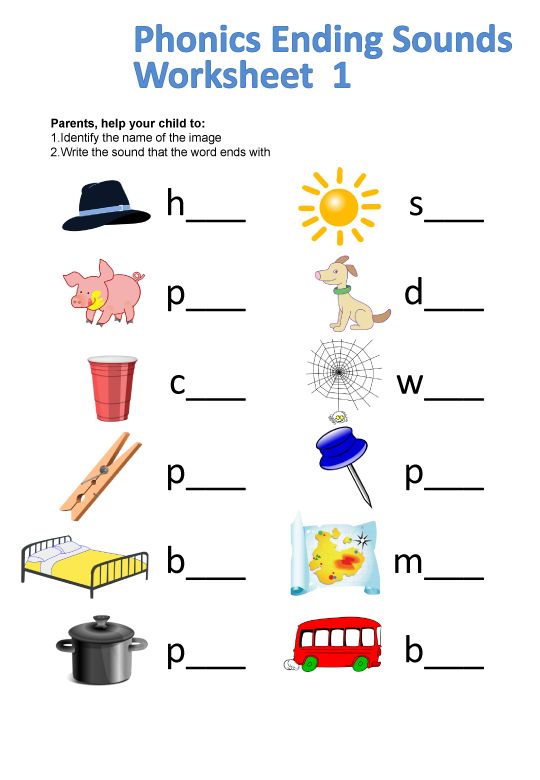 But, kids are also strengthening their hands and gaining motor feedback about objects as they explore colors and other discriminating factors like weight and size.
But, kids are also strengthening their hands and gaining motor feedback about objects as they explore colors and other discriminating factors like weight and size.
Color and shape sorting– This preschool color sorting activity gives kids fine motor experiences with wikki stix. Ask preschoolers to copy the shapes, too for extra fine motor skill building and visual motor integration.
Fine Motor Color Sort– Grab an old spice container or cheese container, and some straws. This color sorting activity lays the groundwork for fine motor skill development and math skills. Kids can count the straws as they drop into the container and work on sorting colors while developing open thumb web space, separation of the sides of the hand and arch strength.
Color Matching Water Bin– This color learning activity is a sensory motor activity that also teaches letters. It’s perfect for preschool and kindergarten or even older grades as kids are immersed in multi- sensory learning with letters and pre-reading skills.
Clothespin Color Match– Children will love this fine motor activity that builds hand strength in a big way.
Bear Sees Colors Book and Activity– We used a snack to explore colors with a beloved preschool book. This is multisensory learning at its finest.
Gross Motor Color Games– There are many ways to explore and teach colors using games. Try some of these to add movement and play into learning colors at the preschool level:
- Color I Spy- Call out a color and kids can run to touch something that is that color. Add variations of movement by asking kids to skip, hop, leap, crawl, or bear walk to touch the colors.
- Color Simon Says- Call out directions based on clothing colors that kids are wearing. Add as many variations of movement and auditory challenges. This is a great activity for building working memory skills in preschoolers.
- Color Tag- Kids can play tag and when they tag another player, they need to say a color for that person to go to.
 Another variation is having the players who are tagged run to a color that the tagger calls out.
Another variation is having the players who are tagged run to a color that the tagger calls out.
Teach Colors in Kindergarten and older grades
Once children are school-aged, teaching colors doesn’t end. In the school years, children explore color mixing, learning about primary colors, and more. Look at all of these color experiences that kids learn during the school years:
- Spelling color names
- Learning Primary Colors
- Learning secondary colors
- Color mixing
- Color theory
- Color wheel
- Complimentary colors
Try some of these color activities for older children:
Color I Spy free therapy slide deck- This color themed scavenger hunt will get kids up and moving, using the items they have in their home as they work on visual perceptual skills, handwriting, and more. Kids can visually scan around their home to match the colors on the slide deck. Then, there is a handwriting component. This is a great slide deck for anyone working on handwriting skills with kids, virtually.
This is a great slide deck for anyone working on handwriting skills with kids, virtually.
Color Exercises– Use gross motor exercises and stretches as well as fine motor exercises to get kids moving while working on SO many skill areas: bilateral coordination, motor planning, strengthening, core strength, precision, dexterity, visual motor skills…
Rainbow Deep Breathing Exercise– This free printable PDF is super popular. There’s a reason why: kids love the deep breathing activity and We love the mindfulness, coping skills, calming, and regulation benefits. Great for all ages.
Rainbow Binoculars Craft– Kids can use paper towel tubes in a craft that helps them look for and identify colors. Use these rainbow binoculars in visual scanning, visual discrimination, visual figure-ground, and other perceptual skills.
Colored pencils activities– All you need is a couple of colored pencils (or substitute with a regular pencil if that’s all you’ve got on hand) to work on pencil control, line awareness, pencil pressure, and letter formation.
Benefits of coloring with crayons– Just grab a box of crayons and build so many fine motor and visual motor skills.
Make crayon play dough– Explore colors with heavy work input through the hands and arms using all the colors of the rainbow. This crayon play dough recipe is a popular sensory recipe here on the website.
Colleen Beck, OTR/L is an occupational therapist with 20+ years experience, graduating from the University of Pittsburgh in 2000. Colleen created The OT Toolbox to inspire therapists, teachers, and parents with easy and fun tools to help children thrive. As the creator, author, and owner of the website and its social media channels, Colleen strives to empower those serving kids of all levels and needs. Want to collaborate? Send an email to [email protected].
Learning colors: how to teach a child to distinguish colors and shades
It is generally accepted that by the age of three a child should learn to distinguish between primary colors.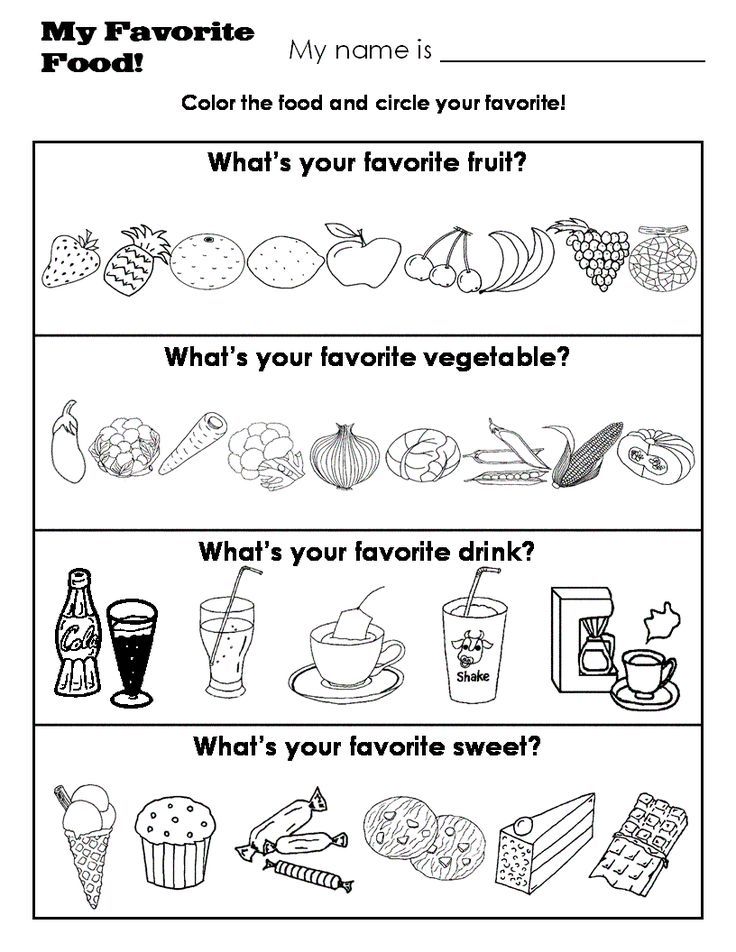 This skill is an important part of sensory development, it gives the child the opportunity to see the world in a new way. Often, if the baby does not know or confuse colors, parents have concerns about the pace of development of the child. Do I need to worry if the study of colors is not easy for a child? How to teach a child to distinguish colors? You will find answers to these questions in our article. nine0003
This skill is an important part of sensory development, it gives the child the opportunity to see the world in a new way. Often, if the baby does not know or confuse colors, parents have concerns about the pace of development of the child. Do I need to worry if the study of colors is not easy for a child? How to teach a child to distinguish colors? You will find answers to these questions in our article. nine0003
At what age does a child begin to see colors?
Studies have shown that children begin to perceive colors by 2-3 months. The first colors a child sees are yellow, orange, red, green. At this age, babies can already react differently to their toys of different colors (for example, a red rattle can please a child more than a blue one), look at bright pictures with enthusiasm. The baby's world quickly acquires colors, but if we talk about the ability to consciously find an object of the right color, then usually it appears in children at the age of one and a half. It is at this age that it is optimal to start learning colors in a playful way. You can voice the names of flowers to a child for up to a year, this will only benefit him. But do not demand too much from the baby, remember that his brain is actively developing, and as soon as the time comes, you will certainly see the results. nine0003
You can voice the names of flowers to a child for up to a year, this will only benefit him. But do not demand too much from the baby, remember that his brain is actively developing, and as soon as the time comes, you will certainly see the results. nine0003
To see if your child is ready to learn colors by playing with building blocks, ask your child to point to a part that is the same color as yours. If the baby can find objects of the same color, then he is quite ready to memorize the names of colors.
Learning colors in everyday life
Children get most of their knowledge about the world in everyday life: communicating with adults and peers, observing nature, playing. The study of flowers is no exception. Sometimes a child does not need to do special exercises to learn to recognize colors. For this, it is enough that he hears the name of the color and associates it with a specific thing. During daily activities, voice for the child what color the objects are around. Whether you are drawing, playing with blocks, looking at cars in the yard, reading, swimming, eating, dressing - in each of these situations, you can gently teach your child to distinguish colors. nine0003
Whether you are drawing, playing with blocks, looking at cars in the yard, reading, swimming, eating, dressing - in each of these situations, you can gently teach your child to distinguish colors. nine0003
It is important that the study of colors does not turn into torture. You should not constantly test the child's knowledge by asking him which color is which. Soon the baby may just start to ignore you. “Let's paint the sun yellow!”, “What a delicious green cucumber!”, “Oh, where did the blue cube go? Here it is!" are examples of how you can gently help your child remember colors.
Games for learning colors and their shades
In order to get your baby interested in learning colors or to reinforce the knowledge they already have, you can offer your child to play special “color” games. nine0003
Color Sorting
Sorting games are designed to help children learn to group objects by color. Any materials at hand can be items for sorting: toys, covers, designer parts, cubes, buttons, cereals, pencils, etc. You can organize the game in various ways:
Any materials at hand can be items for sorting: toys, covers, designer parts, cubes, buttons, cereals, pencils, etc. You can organize the game in various ways:
You can come up with as many options for sorting by color, it all depends on your imagination. So that the child does not lose interest in the task, connect the plot of the game with his favorite characters, toys (for example, a cat will eat from a yellow bowl, and a baby elephant from a red one, etc.). nine0003
Match a Pair
Help your child learn colors with the Match a Pair series. Ask your child to find a petal for a bug, a pot for a flower, a roof for a house, etc. You can present the baby with a deliberately wrong option and ask to correct the mistakes.
Pick up a patch
Show the child the picture with the missing details. Ask him to fill in the gaps (this can be done with plasticine, pom-poms, caps, cards, etc.). nine0003
Color Lotto
At the age of about one year, children begin to be interested in various lottos. In the color lotto, the task is to collect pictures of the same color on the card.
In the color lotto, the task is to collect pictures of the same color on the card.
Colored Sensory Boxes
Create a sensory box for your baby where everything is the same color. During the game, the child will be able not only to remember the color that he sees, but also to develop fine motor skills, tactile sensitivity, thinking, and imagination. nine0003
Color days
This is one of the most interesting and popular ways to teach your child to distinguish colors. Its essence is that during the day (or several days) you draw the child's attention to objects of a certain color. For example, on a yellow day, you can dress in yellow clothes, play with yellow toys, draw a yellow chicken. Surrounded by one color, the baby will easily remember it.
Cards for learning colors
You can learn colors with your child using cards. With the help of Doman's "Colors" cards, you can introduce your baby not only to the main colors, but also to different shades. It is important not to overload the child with unnecessary information about the names of 10 shades of green or red. Learn only those shades whose names you can use in the game and life. nine0003
It is important not to overload the child with unnecessary information about the names of 10 shades of green or red. Learn only those shades whose names you can use in the game and life. nine0003
Board games for learning colors
Board games are a great way to learn about colors and consolidate knowledge about them. Currently, the stores offer a wide range of similar games for every taste and budget. Choose a game that suits your child.
Educational cartoons
There are many educational cartoons on the Internet that will help your child memorize colors quickly. Here is one of them:
Educational books
If your little one loves to listen to stories and look at pictures, this is the way for you. We all remember the wonderful story of V.G. Suteev "Rooster and paints", by S.Ya. Marshak has a whole “Colorful book”. You can also find many educational books that will become your faithful assistants.
Conclusions
We have listed for you different color learning games. In order for a child to master the concept of color well, it is worth adhering to a number of principles: do not rush the baby, provide a variety of material for games, discuss what you see. nine0003
Conclusion
You can start studying colors from an early age, the main thing is that it is interesting for the child. It is impossible to specify clear age limits when a child should learn primary colors. This process, like all development, is individual for each baby. The Sozvezdie Development Center has created a Montessori environment for kids, aimed at the comprehensive development of the child. In the classes "Together with Mom" children in a playful way get acquainted with the concepts of color, shape and size, do thematic creative work. You can learn from our teachers how to interest a child in an activity and how to properly present him with cognitive information. Develop with us! nine0003
Prepared by a Montessori teacher
Sokolova Oksana
Learning colors with the smallest preschool children
When and how do we learn colors with our children?
Every parent wants their baby to be the very best. This is especially true for those parents whose baby is the firstborn.
This is especially true for those parents whose baby is the firstborn.
For the first children, they buy all the best, the most beautiful and expensive. But at the same time they forget that the child needs not expensive and beautiful things and toys, but high-quality and skillful upbringing. nine0003
What can be taught to a small child? It turns out that there is something that can be taught at a very early age. Learn to distinguish colors.
When we hang different objects in the crib that have different colors and shades, the baby reaches out with his arms not to those figures that have a bizarre shape, but to those whose color he likes the most.
i.e. already at this age, the baby is able to distinguish colors. If you observe what colors a child chooses when he is a toddler, you can easily determine the direction of his character. You can even correct his inclinations by instilling color preferences. nine0003
If you notice that your child is reaching for blue, brown toys, it's time to sound the alarm.
It would be more correct to remove toys of these colors from use, at least until a year and a half, when the baby will realize that these colors can be, but in small quantities.
But yellow, green of different shades should be in front of the child's eyes as much as possible. Red is enough, but not overdone, so as not to instill feelings of aggression. Blue and pink are a must, as a factor in the formation of calm in the character of the baby. nine0003
As soon as the child has grown up a little, up to about a year old, we begin to consciously learn colors with the child.
Contents
- Why do we teach colors with a child?
- Learning colors creatively
- Learning colors while walking
- A new way to learn colors
Why do we learn colors with a child?
Color perception helps the child not only to distinguish the diversity of the objective world, but also contributes to the formation and formation of the emotional sphere of the baby.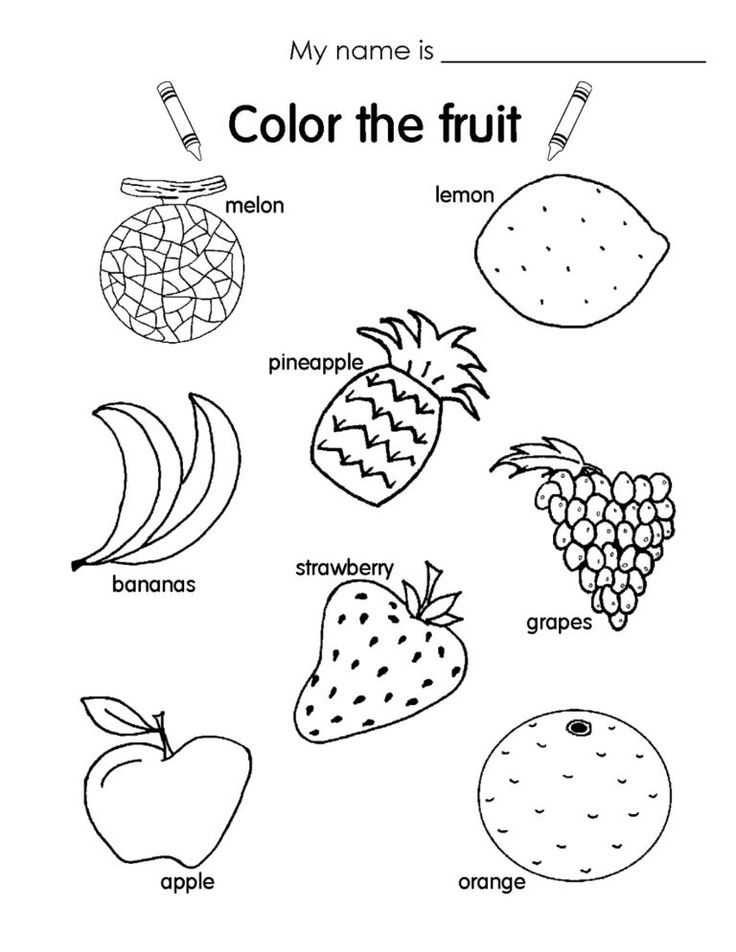 nine0003
nine0003
Therefore, it is very important to teach a child to perceive and distinguish colors.
Any education of the youngest children should be carried out in a playful way. A large number of didactic and other types of games have been developed for teaching color.
Let's dwell on them in more detail.
Perhaps the most popular color learning game is Find the Color. At first, the baby cannot determine the color even from the sample that you show him. Therefore, you first need to pick up cubes and other objects of the same shade. You can invite the child to arrange in piles all objects of the same color and a certain shade. nine0003
It is necessary to repeatedly say what color the toy is.
The next moment in the game is to lay out multi-colored objects that are specially mixed up. These can be handles with caps removed. Sometimes it is useful to put a cap on a pen of a different color and ask if the color is right?
Another interesting method. Colored caps are large enough to fit multiple toys under one cap.
Colored caps are large enough to fit multiple toys under one cap.
The task can be such that the child puts toys under a cap of a certain color. Then the caps are raised in turn, and the task is evaluated for correct execution. The cap is blue, for example, and all the toys under it are also blue. And so on. nine0003
The game "Find the extra" is very popular for studying the different qualities of a child's personality. When we teach colors with a child, we can offer him to find an object that is extra in color in a bunch of one-color ones. Put in a pile, for example, red toys, one toy of a different color.
Game "Colorful balls". Pour balls or balls of different colors on the floor and put a few boxes. In each box you need to put toys or objects of a certain color.
For learning to be effective, each action must be commented and each color named. By repeatedly asking the child questions, we encourage the child to think. This will be an incentive to remember the colors.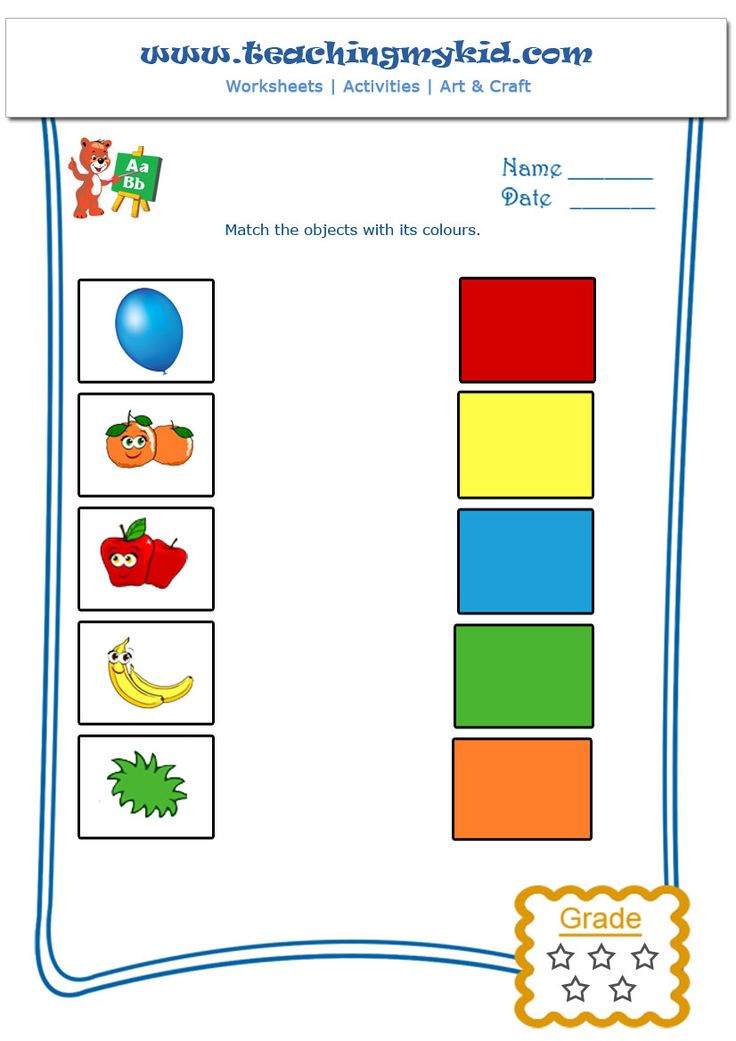 nine0003
nine0003
Learn colors creatively
Another effective way to introduce and reinforce a child's knowledge of color is creativity.
Paints, plasticine, colored pencils and other accessories will help the child remember colors and learn to perceive their different shades.
Among other things, the child receives skills and abilities for visual activity, and also develops fine motor skills of the hands.
That's how much benefit we get when we learn colors with a child at a very young age. nine0003
By the way, instead of paints containing some elements unhealthy for a child's body, you can use natural dyes - raspberry or beet juice, etc.
Before you start drawing, it is worth clearly and clearly name the color that we will use and what we will depict.
It is strictly forbidden to use diminutive forms when naming a color, such as "blue" instead of "blue" or "red" instead of "red". Such wording can confuse a child, and he will not learn the color, and will completely get confused in the names. nine0003
nine0003
When drawing, you need to allow the child to draw lines himself, paint over a sheet of paper. You can even let him get his palm into the paint and then make prints on the sheet.
Just watch carefully so that later the baby does not pull these most beautiful hands into his mouth. You never know. Well, if instead of paint we use raspberry juice, and if real paints, then it will not be very good.
Until the child learns the color, do not start learning the next one. nine0003
Learning colors while walking
In general, I think that there is no need to organize special classes to introduce a child to flowers.
You can unobtrusively comment on everything around, doing any business with the baby - whether it's dressing or looking at books. Or even walking down the street. Naming objects, it will be good to give him different definitions - what size, shape. And, of course, to name what color this or that object is.
It will be useful to ask the child questions about the color of objects. It is recommended to praise for the correct answer. It is strictly forbidden to scold for an incorrect answer. Correct the child and say: “You know, I saw it in such a color, but this particular object is such and such.” nine0003
It is recommended to praise for the correct answer. It is strictly forbidden to scold for an incorrect answer. Correct the child and say: “You know, I saw it in such a color, but this particular object is such and such.” nine0003
A new method for learning colors
Now it has become very fashionable to use different methods and technologies for teaching children. I recently came across a color teaching technique called Color Days.
There are six primary colors and also six days of the week, given that one day - the seventh - is a day of rest.
On the first day, all the toys, clothes, dishes the baby has when he eats, etc. one color, the next day everything is laid out in a different color.
So throughout the day the baby sees the environment in a certain color and remembers it. In this case, the name of the color is repeatedly pronounced by parents and the child. nine0003
On this day, we sculpt only this color from plasticine, draw only with the color of this day.


